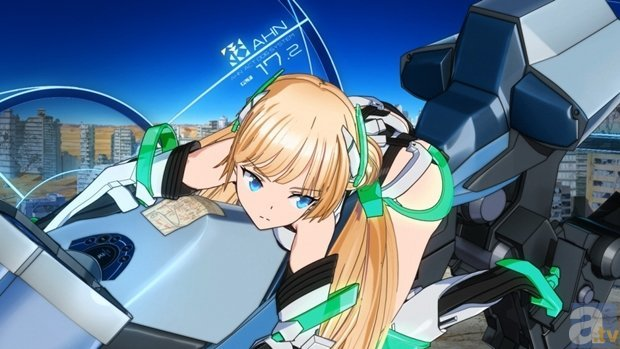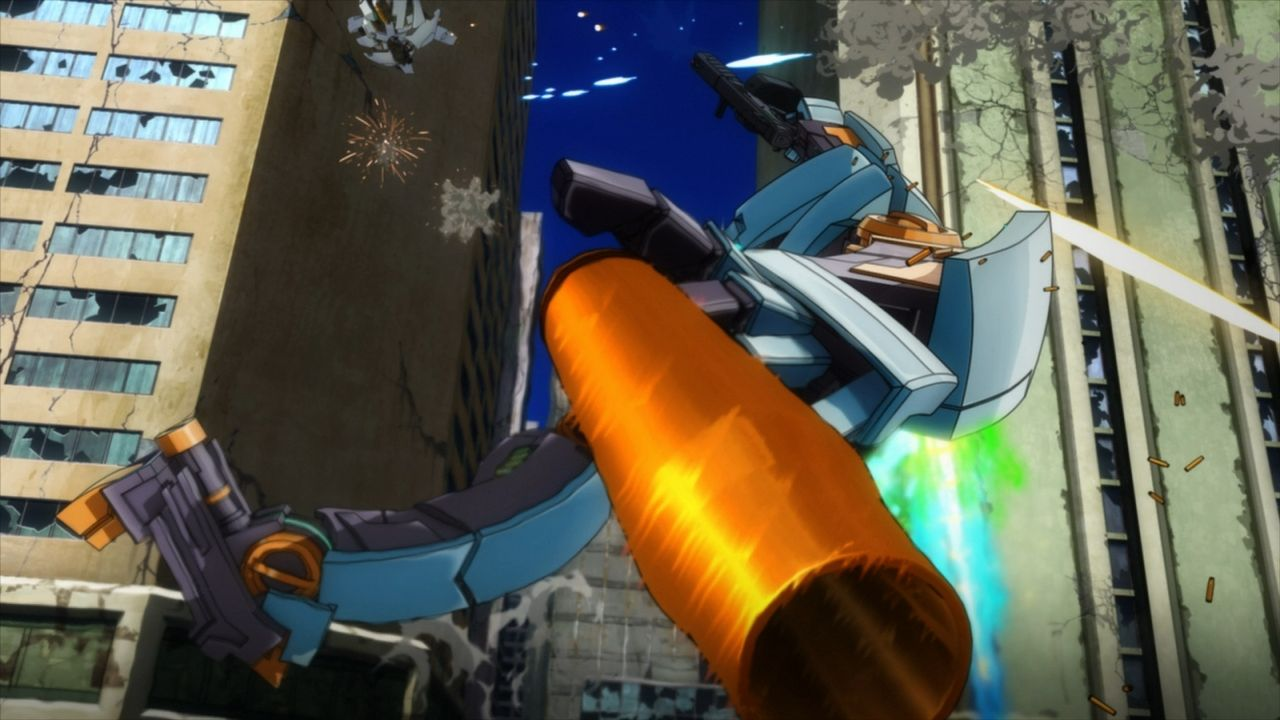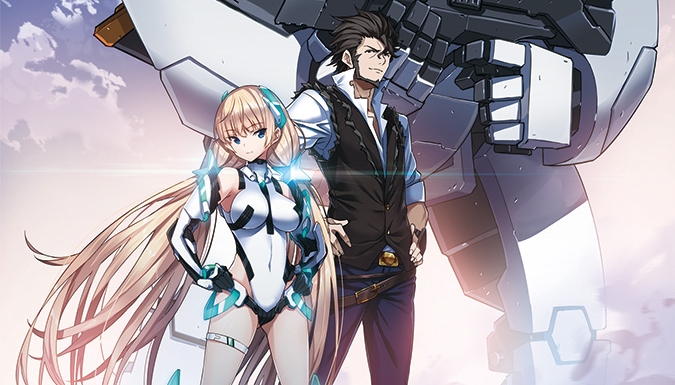On December 13, 2014 Aniplex USA held the Los Angeles (LA) premiere of Expelled from Paradise (Rakuen Tsuiho) directed by Seiji Mizushima, written by Gen Urobuchi, and producer Koichi Noguchi. This movie has been playing in Japan and Japanese fans have been raving about it. Using a new 3D CGI technique called “cell look,” the computer graphics mimic the traditionally used cell art to the point that it looks really similar according to Mr Koichi Noguchi.
I got invited to the premiere which was in downtown LA on December 13, 2014 which was the first place outside of Japan to air the movie, Expelled from Paradise. People who attended the premiere received an exclusive movie poster, featuring the main characters Angela and Dingo, with their tickets. The doors opened at noon and the movie began at 1:00PM. However, before the screening they announced that the producer, Mr. Koichi Noguchi, was in attendance and had flown all the way from Japan to attend the premiere as a guest. He personally wanted to see how the film would be received outside of Japan by an American audience. The audience welcomed him with a warm round of applause. After his speech to the audience, the film began with a short recorded message from the movie director Mr Seiji Mizushima.
The film itself takes a leap into the future where humans have “evolved” into a data driven race, living in a server world where the amount of storage space you have is what pronounces individuality and status. In this future, there are two sides: one that lives on the earth surface and the other a server orbiting around the planet. On the surface there are humans, trying to live in this desolate world along within a few cities while on other digital side humans live in a digital state where they don’t have a physical body, but instead have storage space.
The story revolves around Angela coming from the server world and Dingo a surface dwelling guide searching for an individual named Frontier Setter. I won’t say anymore since I don’t want to spoil anything but the film attempts to address the age old questions “is the grass always greener on the other side?” and “can we replace human interaction with artificial interaction?” Thematically, the main emphasis of the movie is about how far we are moving from the real world into the cyber world. Since the internet was made we have moved from shopping in physical store to shopping online and meeting up with friends in real life to meeting up on Skype. So can this actual replace human interaction? Will grabbing a cup of coffee and catching up in real life be replaced by logging in online and check status updates?
 While watching the movie some of the challenges that the protagonist faced reminded me of Saya no Uta and Fate/Zero, which were both written by Gen Urobochi. The question Angele faced when she was confronted with the decision to continue her life as she knew it or risk it all for someone she knows or something she believes is worth losing it all for. To me, I would describe the movie as a cross between Matrix, Elysium, a bit of WALL-E and some mecha battle scenes.
While watching the movie some of the challenges that the protagonist faced reminded me of Saya no Uta and Fate/Zero, which were both written by Gen Urobochi. The question Angele faced when she was confronted with the decision to continue her life as she knew it or risk it all for someone she knows or something she believes is worth losing it all for. To me, I would describe the movie as a cross between Matrix, Elysium, a bit of WALL-E and some mecha battle scenes.
Overall the film was enjoyable and the new 3D CGI was well implemented it. I thought I would see the CGI as in most action movies and say “why” but I didn’t it seemed that they integrated it very well into the movie to the point where I didn’t even remember I was watching a CGI movie. The story was not slow to the point where I would zone out, as it kept me interested throughout. There were parts in which I did stop and giggle at the low blows they took such as some camera angle shots where the camera focused on some attributes of the female protagonist and reason for her age; I will just leave it at that. If you enjoyed movies such as Avatar, Matrix, WALL-E and the setting of Cowboy Bebop and the Gundam series then this is a film you will enjoy.
![]()
Pros:
- Great use of the CGI cell look
- Great production team (director, producer, writer)
- Character quality over quantity
- Easy-to-follow thought-provoking storyline
Cons:
- Surprisingly light for a Gen Urobochi story
- Story relies on too many cliches and is predictable at times

